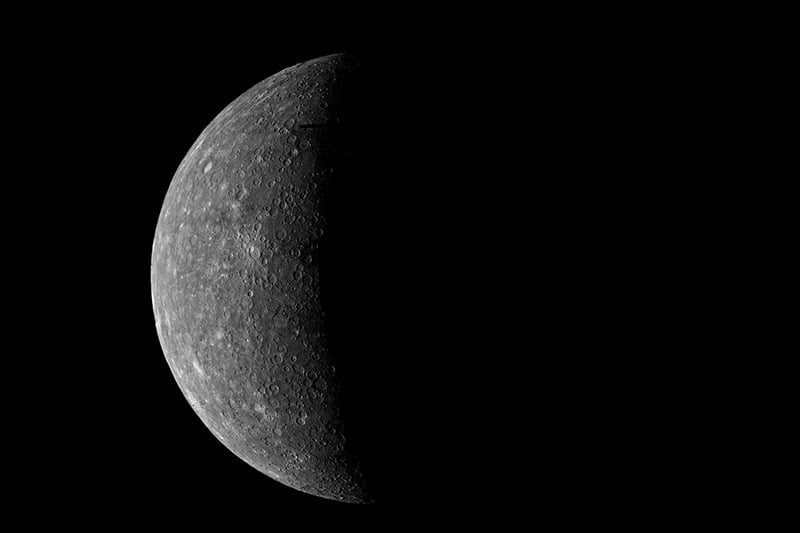A planetary parade is taking place in the night sky next week
Cause you’re a sky, ’cause you’re a sky full of stars…
We’ve seen some pretty glittering and spectacular things taking place in the skies this year, and as it’s only February, we can expect a lot more razzle-dazzle from our skies this year.
In January, we witnessed a planetary alignment unlike any this generation has ever seen, where the celestial bodies in our solar system came together to create a breathtaking picture in the sky. Six major planets – Mars, Jupiter, Uranus, Neptune, Venus, and Saturn – lined up perfectly, providing quite the spectacle for stargazers.
It was a rare phenomenon, with the next one predicted to take place in 2040, which is why the night was so special.
But the dance isn’t over yet…

No, this isn’t the moon. This is Mercury. It does look pretty similar to our moon…
According to Ibrahim Al-Jarwan, Chairman of the Emirates Astronomy Society, we will witness yet another special astronomical event. From February 25 to 28, three bright planets – Saturn, Mercury and Venus – will align post-sunset.
Basically, it’s sort of a ‘continuation’ of the Planetary Parade from January. According to the Dubai Astronomy Group, the sparkling phenomena continues from January until the last week of February, with Mercury joining the parade.
Now sadly, you can’t see the planetary details with your naked eye or phone. It will look like bright stars, and a telescope will be needed to view the details of the planets. Usually, the astronomy group plans a viewing event, but no specific event has been announced for this alignment. But you can stay up-to-date and register here.
So, what exactly is planetary alignment?
Simply put, a planetary alignment occurs when multiple planets in the solar system appear to line up in the sky, and it is visible from Earth. It’s a rare occurrence and much sought after, making it very special indeed.
During an alignment, these planets come together in close proximity, creating a visual display in the night sky.
Featured image: Getty Images
